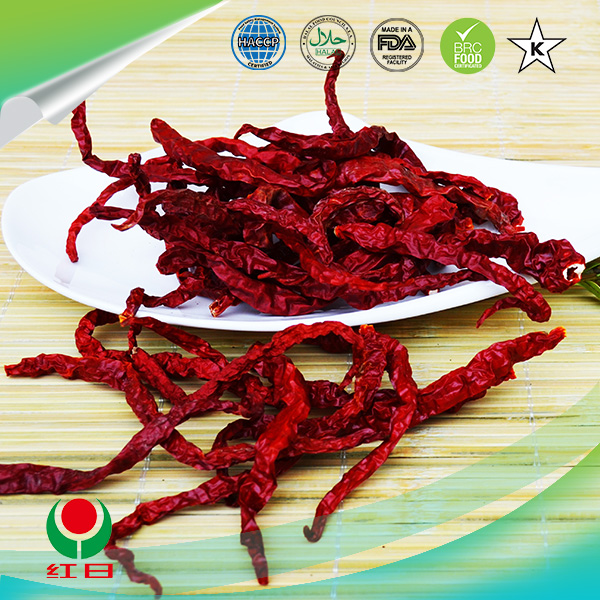- No. 268 Xianghe Street, Economic Development Zone of Xingtai city, Hebei 054001 China
- Byron@hbhongri.cn
hot paprika
The Spicy Allure of Hot Paprika
Paprika, a beautiful spice with a rich history and vibrant color, has found its way into countless dishes around the world. Among its various types, hot paprika stands out for its intense flavor and heat, making it a beloved ingredient for those who appreciate a bit of spice in their culinary adventures. This article will explore the origins, uses, health benefits, and cultural significance of hot paprika, as well as some delicious recipes to inspire your cooking.
Origins and Varieties
Hot paprika is primarily derived from the Capsicum annuum species of peppers, which includes sweet and mild varieties, but it's the hotter cultivars that give us hot paprika. Traditionally associated with Hungary and Spain, this spice has been cultivated for centuries. Hungary is particularly famous for its paprika, where it is considered a staple in many dishes, including goulash and stews.
In Spain, the term pimentón is used, and it comes in three primary varieties dulce (sweet), agridulce (bittersweet), and picante (hot). Each type brings its unique flavor profile, but hot paprika or picante is characterized by its robust spiciness and smoky undertones, often thanks to the drying process, which can involve smoking the peppers over an oak fire.
Culinary Uses
Hot paprika is incredibly versatile and can be used in a wide range of dishes. It serves as an essential ingredient in various cuisines, adding depth and richness. In Hungarian cooking, it's often used to season meats, such as pork or chicken, and to enhance the flavor of vegetables. Spanish chorizo is another iconic use of this spice, where hot paprika contributes to its signature flavor and heat.
Beyond these classic dishes, hot paprika can also be used to elevate everyday meals. A sprinkle of hot paprika can transform a simple vegetable sauté into an enticing dish. It can be mixed into marinades for grilled meats, stirred into soups and stews, or used as a seasoning for roasted vegetables. Its vibrant red color also makes it a favorite for garnishing dishes, adding visual appeal alongside its spicy kick.
Health Benefits
When used in moderation, hot paprika brings not only flavor but also health benefits. This spice is rich in antioxidants, primarily carotenoids, which can help neutralize free radicals in the body, potentially reducing cellular damage and lowering the risk of chronic diseases. Additionally, the capsaicin found in hot varieties of paprika is known to have anti-inflammatory properties and can aid in metabolism.
Moreover, spices like hot paprika can stimulate appetite, enhance digestion, and provide a warm sensation that can be enjoyable, especially in colder weather. As with any spice, it's essential to remember that moderation is key, especially for those sensitive to heat.
hot paprika

Cultural Significance
Hot paprika holds a special place in the cultures of many countries, especially in Hungary and Spain. In Hungary, the spice is celebrated at various festivals, and its cultivation is a point of national pride. The rich red-orange hue of paprika is also prevalent in the country’s traditional textiles and art, symbolizing warmth and flavor.
In Spain, paprika plays a crucial role in the country’s culinary identity. The intense flavors contribute to many beloved dishes, from paella to patatas bravas. In fact, some regions have even created unique traditions centered around the harvest and production of paprika, emphasizing its importance in Spanish gastronomy.
Recipes to Try
If you're ready to incorporate hot paprika into your cooking, here are a couple of recipes to get you started
Spicy Paprika Chicken
- Ingredients Chicken thighs, hot paprika, garlic, olive oil, salt, and pepper. - Instructions Marinate chicken thighs in olive oil, minced garlic, hot paprika, salt, and pepper for at least an hour. Grill or bake until cooked through.
Paprika Roasted Potatoes
- Ingredients Potatoes, hot paprika, olive oil, garlic powder, salt, and pepper. - Instructions Toss diced potatoes with olive oil, hot paprika, garlic powder, salt, and pepper. Roast in the oven until crispy and golden.
Conclusion
Hot paprika is not just a spice; it’s a flavor enhancer that adds complexity and heat to dishes from various cultures. Its distinctive taste and fiery nature make it a favorite among food enthusiasts worldwide. Whether you’re exploring traditional recipes or innovating your own, hot paprika can bring a new dimension to your culinary creations. Embrace the spicy allure of hot paprika and embark on a flavorful journey that celebrates this vibrant spice!
-
Unlock the Power of Nature with Capsicum Oleoresin ExtractNewsJul.03,2025
-
Unleash the Heat: Discover the Wonders of Spicy Crushed Red PepperNewsJul.03,2025
-
Unleash the Flavor of Red Pepper Pods – Elevate Your Culinary Creations!NewsJul.03,2025
-
The Rich Flavor of Red Pepper Dried – The Ultimate Ingredient for Your Culinary Creations!NewsJul.03,2025
-
Discover the Rich Flavor of the PaprikaNewsJul.03,2025
-
Discover the Flavorful World of Paprika & Chili ProductsNewsJul.03,2025







